To the journalist-activists at the New York Times, Silwan is just another Palestinian village that the Zionist Settler Colonial Enterprise is undermining, literally. According to David Halbfinger’s latest piece, “Palestinians in the crowded East Jerusalem neighborhood of Silwan have complained that the walls of their homes were settling and cracking, disturbed by an underground archaeological dig led by a right-wing Jewish settler group.” Yet the story of Silwan and the discoveries at the City of David show the problems with journalism surrounding Israel these days.
One would think a story about the US ambassador to Israel celebrating the opening of a new archeology exhibit might include a bit of history. Perhaps it would mention that Silwan’s first inhabitants were Yemeni Jews who in 1881 spent six months traveling to Jerusalem. These Jews were inspired to travel the long, arduous journey on the promise that the Messiah would come to Jerusalem the following year. They arrived broke and were greeted with suspicion by the local Jewish community living in Jerusalem. Settling on the eastern slopes of the Kidron Valley, this group of Yemeni Jews built a thriving community and established a synagogue, the same synagogue that the “right-wing Jewish settler group” is rebuilding and living in.
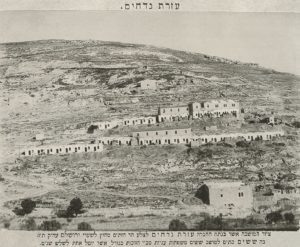 Perhaps an article that mentions the five thousand Palestinian inhabitants might mention how Silwan became a Palestinian village when it started as a Yemeni Jewish village. As the inhabitants in Jerusalem felt more confident to move out of the walled city, the original village expanded to include not just Jews but also Muslim and Christian Arabs, too. An early British Mandate period census shows Silwan to be a mixed village of almost two thousand people, of which the Jews made up about ten percent. But during the 1936–39 Arab Revolt, the village of Silwan was ethnically cleansed of all Jews, and Arab families moved into the homes of Yemeni Jews. One might wonder if the descendants of those Yemeni Jews still have the key to their homes.
Perhaps an article that mentions the five thousand Palestinian inhabitants might mention how Silwan became a Palestinian village when it started as a Yemeni Jewish village. As the inhabitants in Jerusalem felt more confident to move out of the walled city, the original village expanded to include not just Jews but also Muslim and Christian Arabs, too. An early British Mandate period census shows Silwan to be a mixed village of almost two thousand people, of which the Jews made up about ten percent. But during the 1936–39 Arab Revolt, the village of Silwan was ethnically cleansed of all Jews, and Arab families moved into the homes of Yemeni Jews. One might wonder if the descendants of those Yemeni Jews still have the key to their homes.
Perhaps an article that praises former ambassadors for avoiding East Jerusalem—since “Israel captured East Jerusalem from Jordan in 1967 and then annexed it” and “most of the world considers it illegally occupied, and the Palestinians want it as the capital of a future state”—would inform readers that the British started the process of annexing Silwan into the Jerusalem municipality, and the Jordanians completed the process in 1952. It seems the problem is not with the annexation but with who is annexing.
Omitting the Pool of Siloam’s significance to not just Jews but also Christians is not surprising since ignorance of the Bible is required for employment at the New York Times. Yet for those who are informed, the Pool of Siloam is indeed a mikvah (Jewish ritual bath). It is also, according to the Gospel of John, the place where Jesus instructed the blind man to go wash and be healed. It is on the Southern Wall steps of the Temple Mount that lead up from the Pool of Siloam that Paul defended his Jewishness.
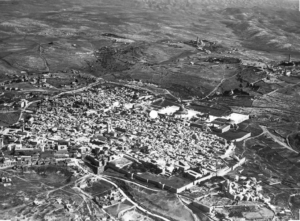 It’s not just the Pool of Siloam and the new archeological discoveries that make the City of David significant. It’s the long list of discoveries that confirm the biblical record. For example, the discovery of clay seals, “bullae,” which bear the names of two ministers of King Zedekiah who tried to assassinate the prophet Jeremiah. Yehuchal Ben Shelamayahu and Gedaliah Ben Pashchur are mentioned in Jeremiah 38:1. Another recent discovery is a seal with the name of Nathan-Melech on it. Nathan-Melech is a servant to King Josiah and is mentioned in 2 Kings 23:11.
It’s not just the Pool of Siloam and the new archeological discoveries that make the City of David significant. It’s the long list of discoveries that confirm the biblical record. For example, the discovery of clay seals, “bullae,” which bear the names of two ministers of King Zedekiah who tried to assassinate the prophet Jeremiah. Yehuchal Ben Shelamayahu and Gedaliah Ben Pashchur are mentioned in Jeremiah 38:1. Another recent discovery is a seal with the name of Nathan-Melech on it. Nathan-Melech is a servant to King Josiah and is mentioned in 2 Kings 23:11.
For Jews and Christians alike, these discoveries not only strengthen faith but also push back at the institutions that seek to delegitimize the Jews’ historical connection to the land of Israel. Perhaps an article that quotes the ambassador at length could quote the senior Palestinian spokesperson and peace negotiator Saeb Erekat, who claimed the “ancient Jewish pilgrimage road in East Jerusalem is based on a lie that has nothing to do with history.” It is also not surprising that the United Nations body that recognizes “World Heritage Sites” refused to recognize that there was ever such a thing as the Temple Mount. The archeological evidence consistently uncovered in the City of David and on the slopes of Silwan have forced the Palestinian leadership and their supporters to find solace in conspiracy theories.
While the New York Times through journalist-activists continues to keep readers uninformed by pushing a narrative that Palestinians are good and Jewish settlers are bad, at least the ambassador understands that “the truth is the only foundation on which peace will come to this area.”
Luke Moon is a senior editor of Providence.
Feature Photo Credit: US Ambassador David Friedman and US Middle East special envoy Jason Greenblatt attended the inauguration of Pilgrimage Road in the City of David, Jerusalem, on June 30, 2019. US Embassy Jerusalem photo, via Flickr.


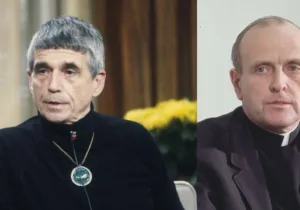
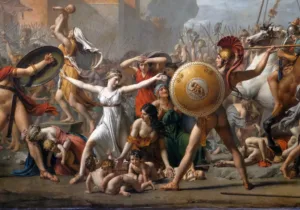
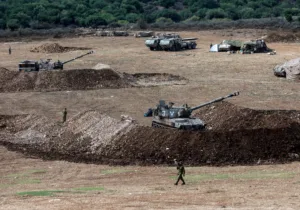

 Sponsor a student for Christianity & National Security 2024
Sponsor a student for Christianity & National Security 2024